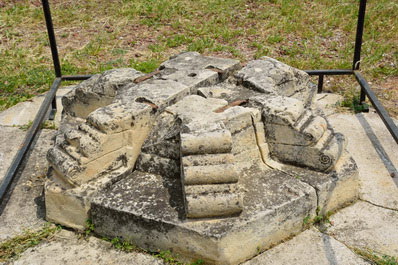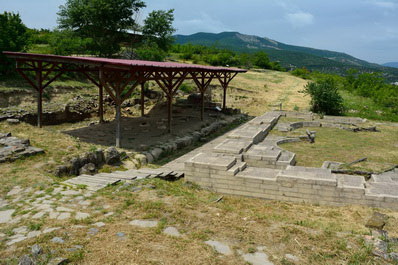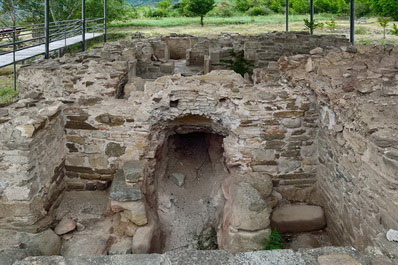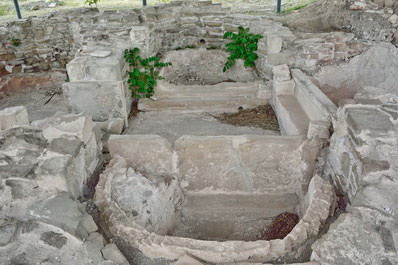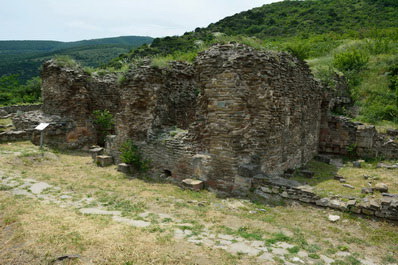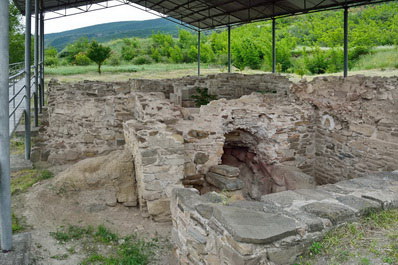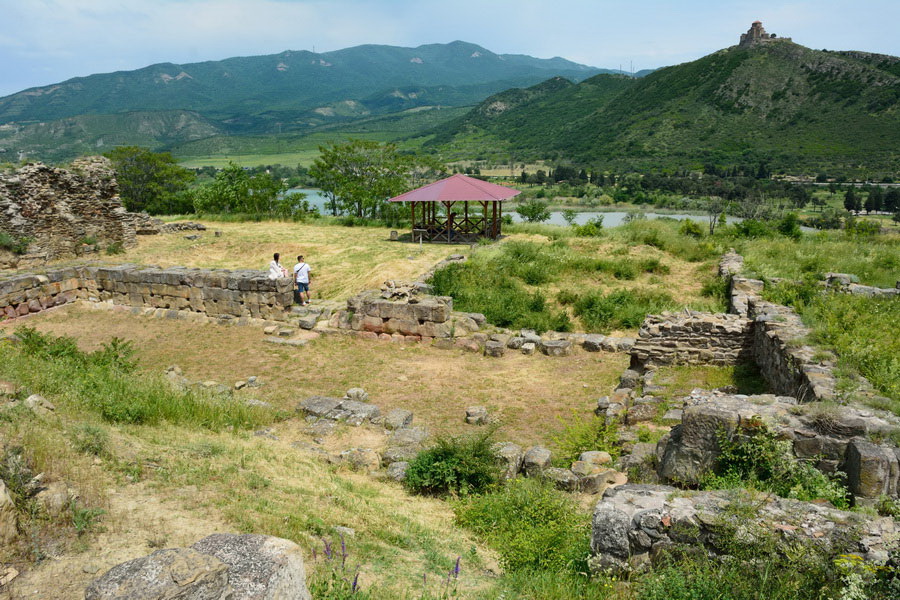
Armaztsikhe-Bagineti near Mtskheta, Georgia is a hidden gem sure to delight anyone who loves chasing down history. Although the site has remained under the radar, Armaztsikhe-Bagineti is one of the most important testaments to the cultural heritage of Georgia.
History
Armaztsikhe translates as “Armazi’s Castle”. Armazi was the supreme pagan deity of the Kingdom of Iberia (also known as the Kingdom of Kartli), of which Mtskheta was once the capital. According to historical sources, in the 3rd century BC King Parnavaz, who was called “Armaz” in Persian, named the deity after himself. He required his subjects to respect and serve the newly erected idol, a syncretic deity known as the lord of the sky, thunder, rain, plants and war. Today several places in Mtskheta, including Armaztsikhe-Bagineti, are named after this god.
Armaztsikhe was erected on Mount Bagineti near the Kura (Mtkvari) and Aragvi Rivers and served as the acropolis of the Iberian Kingdom for centuries. According to historians, it occupied some 30 hectares of land and was surrounded by a massive defensive wall. The acropolis flourished during the Hellenistic period (4th-3rd centuries BC), but with the transfer of the Iberian capital from Mtskheta to Tbilisi in the 6th century, it gradually declined in power before being completely abandoned after Arab conquest in the 730s.
Today, a little bit of imagination will resurrect the entire ancient city from the ruins which unfold before you at Armaztsikhe-Bagineti.
Archeological Excavations
Many articles unearthed at Armaztsikhe in the 1970s emphasize the historical significance of this area and offer visitors a rare glimpse into ancient Georgia. These discoveries include numerous artifacts that date primarily from the 1st century AD through the Middle Ages.
When you arrive at the site, you will first see a sarcophagus, followed by the queen’s bath, king’s bath, a six-apse temple with a wine cellar, a two-cell structure followed by a six-column hall and a single-nave church. All of the places are well-marked and include brief descriptions, making it easier for visitors to grasp the history preserved at the dig.
Sarcophagus, 3rd century BC - 6th century AD
The sarcophagus dates back to either the Hellenistic era or to late antiquity. The woman buried here likely belonged to the royal family, for she was interred with many elegant items, including a beautiful silver bowl, the silver upholstery of a bedstand and bracelets studded with cameos, gold and agate.
Queen’s Bath, 2nd-3rd centuries
Roman bathhouses were common in the residences of Iberian kings and queens, and this particular structure is quite impressive. It begins with a dressing room, which leads to a cold bathing room, followed by a warm and finally a hot bath. It also has a fireplace through which water could be heated and passed through clay pipes.
Wine Cellar, 3rd-4th centuries
During excavations, archeologists made another brilliant discovery, a six-apse pagan temple dating back to the 1st century AD. Wine and grain were stored in the cellar which was attached at a later period. The total volume of the qvevri (clay jugs used in Georgia to ferment and age wine) which were unearthed in the wine cellar is approximately 20,000 liters.
Six-Column Hall, 1st-2nd centuries BC
The Six-Column Hall overlooks the Mtkvari and Aragvi Rivers and once had an altar standing at the entrance. Its original purpose remains unclear -some scholars believe that it was once a royal palace, while others conjecture that it was used as an armory.
How to Reach Armaztsikhe-Bagineti
Armaztsikhe-Bagineti is located 3 kilometers from Mtskheta and 20 kilometers from Tbilisi. On the road from Mtskheta to Tbilisi, look for the sign “Armazi Bagineti” and then take the next right. The site is special not only for its historical significance but also for its untouched nature and unique views of Mtskheta and the river valley which it offers to visitors.
Nearby Attractions
To continue your tour, drive from Armaztsikhe-Bagineti to the 12th-century Armazi Monastery, from which a 30-minute hike will take you to the 13th-14th century Armazi Fortress.


